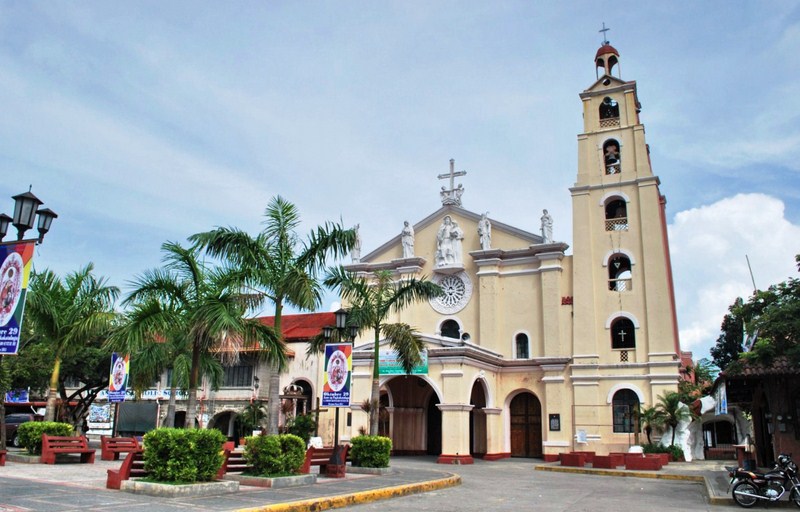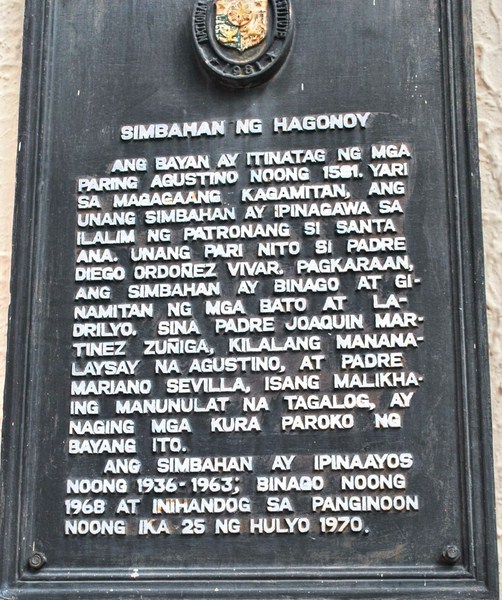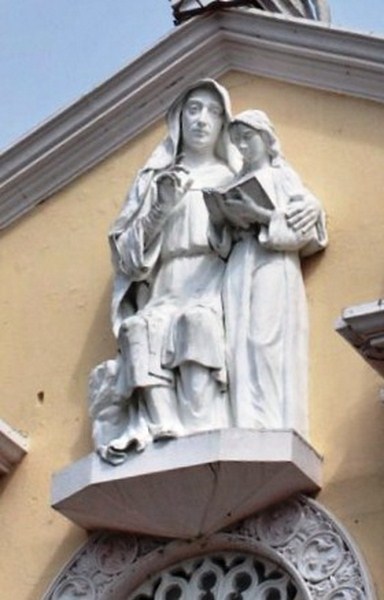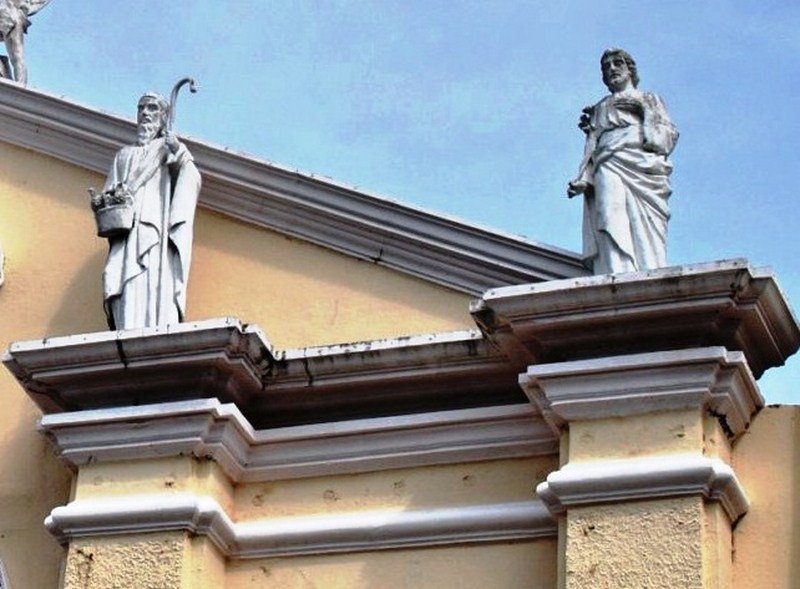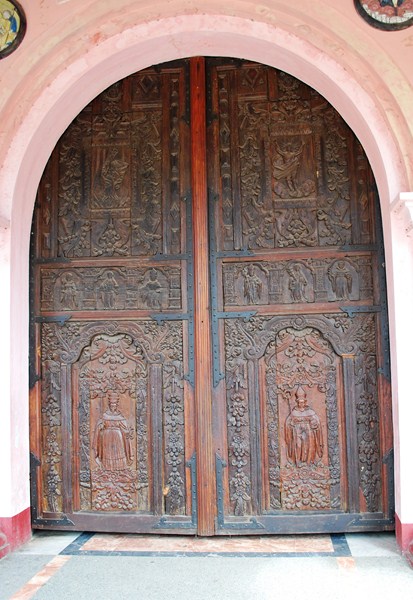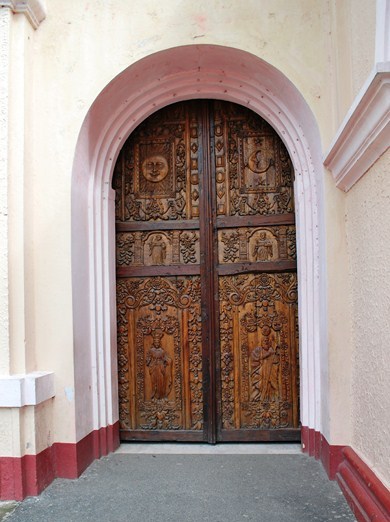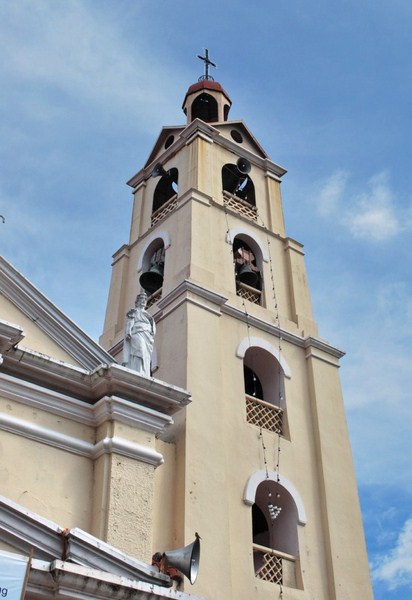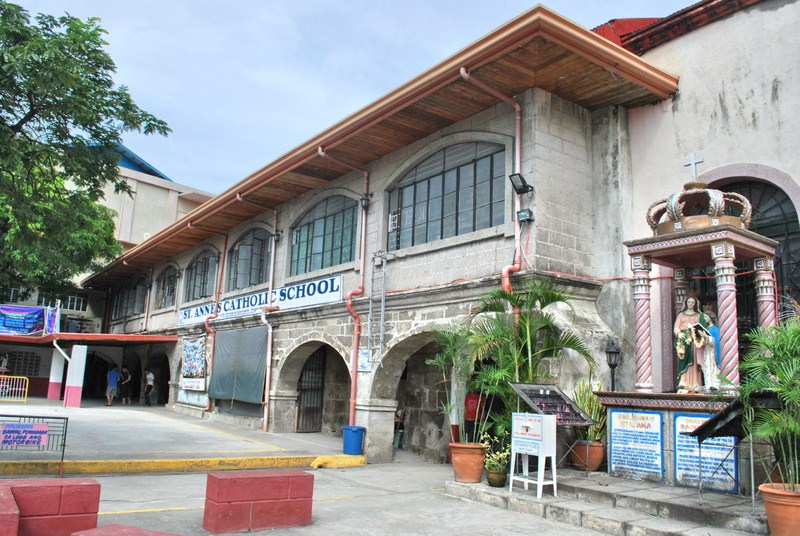First built of stone and brick from 1731 to 1734 by Fr. Juan Albarran, this church was burned down on August 12, 1748. In 1749, it was rebuilt on its present site by Fr. Eusebio Polo and completed in 1752 by Fr. Buenaventura Roldan.
It was replaced with a stone church by Fr. Juan Coronado from 1815 to 1836, damaged by fire (which also damaged 30 houses in the town center) in 1856 and enlarged in 1862 by Fr. Manuel Alvarez. The church was again damaged by during the 1871 earthquake and was repaired in 1872 by Fr. Ignacio Manzanares who strengthened the choir loft’s supporting arches.
It was intermittently restored in 1936, 1961 (a monumental porte-cochere was added by Fr. Celestino Rodriguez) and from 1968 to 1970 (under Monsignor Jose B. Aguinaldo) which changed much of the design of the façade (the wood trusses and galvanized iron roofing were replaced, roof and main altar painted and the facade coated white and decorated with images placed above pilasters).
In 1981, a marker bearing a brief history of the church was installed on the church by the National Historical Institute (precursor of the National Historical Commission of the Philippines). In 1991, it was declared a National Shrine.
The church’s Baroque façade, bare of ornamentation (save for volutes founds on the end of the imaginary triangular pediment, circular reliefs and buttress-like pilasters capped with roof tiles), is pierced with 5 windows: three semicircular arched ones and two rectangular ones on the first level.
A porte-cochere, with a balustraded top, mars the view of the bottom part of the façade. . The façade also sports three semicircular arched entrances (one main and two smaller flanking ones), all featuring antique hardwood doors carved with bas-reliefs.
Four sets of superimposed pilasters, incorporated with Tuscan capitals, divide the facade into two levels (the first smaller than the second) and ending up in a triangular pediment with huge contemporary statues of Augustinian saints flanking that of St. Anne.
The second level, dominated by a rose window and a tableau of St. Anne and the Virgin Mary in the center, has windows corresponding to the choir loft and partly hidden by the portico. The entire façade is capped off with a cross held by two cherubs.
The convent beside the church is now the main building of St. Anne’s Catholic School. The six-storey rectangular bell tower (originally with five levels , a sixth level and a cupola was added during the latest reconstruction of the church) is also bare of detailed ornamentation except for the balustraded semicircular arch openings and buttresses placed at the corners of the tower.
National Shrine of St. Anne: Brgy. Sto. Niño, Hagonoy, Bulacan. Tel: (044) 793-2829. Feast of St. Anne: July 26.
How to Get There: Hagonoy is located 55.6 kms. (a 1.5-hour drive) from Manila an 15.5 kms. (a 40-min. drive) from Malolos City.


